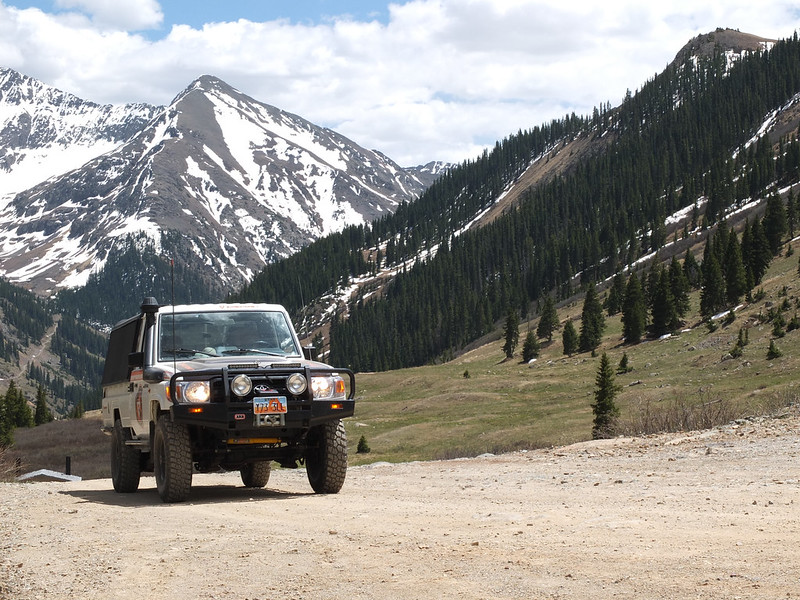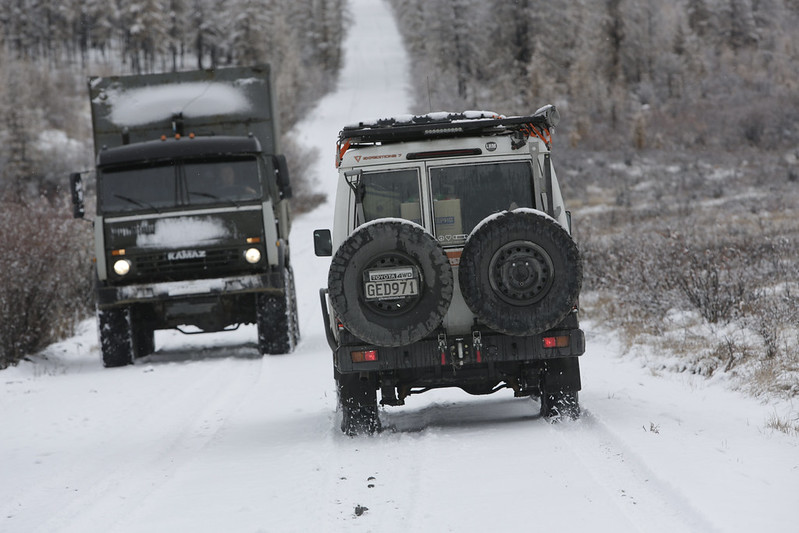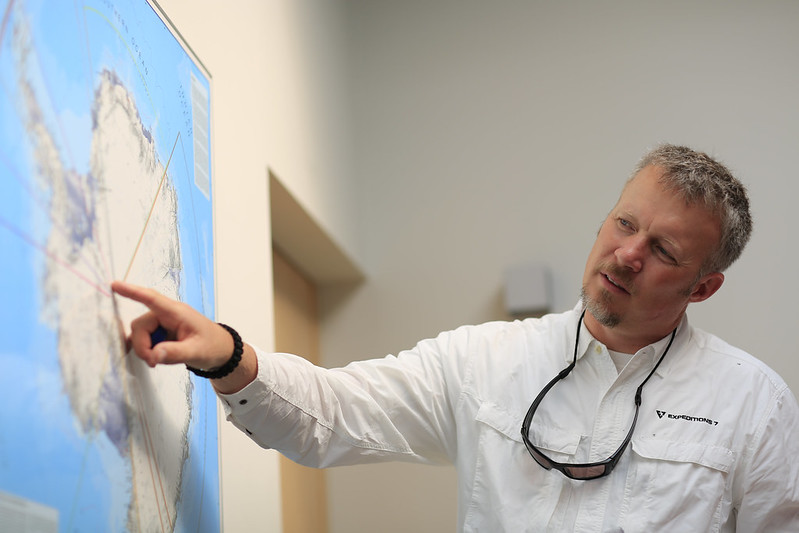TCT Magazine: Thanks so much for the opportunity to chat today, first I want to that you for allowing TCT Magazine to attend, teach, and cover the CruiserFest event a few months ago.
Greg Miller: Well that goes both ways, I think it’s neat that you guys chose to launch at the event and I appreciate the support. Your coverage of the event is a great thing and it will help it continue to grow. You guys are always welcome!
TCT: Now that the 3 year Ex7 is complete, what are your overall thoughts & feelings. I can imagine how exhausting it was.
GM: It was a great experience for me in many ways, a growth experience for me and I learned a lot from the time the idea first crossed my mind until we completed the expedition. To give you an idea of how much I didn’t know, in my original plan I wondered if we would take one or two vehicles, what equipment would I need, who would attend, what time of year would we go, you know, all the questions that come to mind when planning an expedition this big.
I’ve learned so much since then, and most of those lessons came from watching Scott Brady do his great work. He answered a lot of those initial questions early on, and he taught me a lot throughout the trip. He made a lot of really hard things look rather easy.
To get back to your question, what are my thoughts, I’m very excited that we were able to achieve our objective of being able to drive one vehicle on all 7 continents. The pursuit of that objective is really where the growth occurred, and we were able to have countless wonderful experiences along the way.
As one quick example, in the middle of the outback we stumbled into an aboriginal elder’s funeral, purely by chance. We were invited to come to the gravesite service and listen to the sermon prior to internment.
All of the natural things were incredible, the elephants, sunsets, snow, mountains, all of it.
Another interesting story from the southern tip of South America. Literally our first kilometer toward home in Salt Lake City started with a challenge. There was a group that was protesting their wages and working conditions, and literally barricaded the road and were burning tires and crates on the only road in and out of town. They wouldn’t let us leave so we asked the police to help get the barricades moved, they said ‘we’re not getting in the middle of this’, so we had to kind of break through that. I could tell you stories all afternoon, but the sum total of all of that experience is that I’m a better person because of those experiences.
TCT: It seems like you have enough great information for years of talks, and we look forward to hearing you speak in the future.
GM: I certainly don’t want to wear it out, but I also don’t want to starve people if there’s an interest. If people want to hear about it I’d love to share it, but I’m not going to force it on anyone.

TCT: You mentioned Scott Brady, a legend in the overland world, you were able to put together what I call a ‘dream team’. What was the most notable part about the team you were able to put together and how were you able to assemble such a great team?
GM: It started when I met Scott through our mutual friend Kurt Williams, who of course you know. At the outset, and I think Scott would agree, it was going to be Scott and I, a photographer/videographer, and my sons. We were just going to keep it small. Like most worthwhile projects, you get it to it and start thinking about it, and gain new insights and start connecting dots. Soon you’re saying ‘we should do this’ and ‘we should have one of those’ and pretty soon it takes on a life of its own. That’s exactly what happened with Expeditions 7, in fact when Scott and I were driving back from Alaska to Salt Lake City on the first half of the North American Segment, we already knew we needed a third vehicle for more camera gear. So we had the third truck lined up before we even got home from the first segment. That was typical of how this whole thing evolved, right up until the end. By the time we were done there were six vehicles that participated rather than the original two. We also had 48 different individuals participate by the time it was over.
As far as how the team was assembled, everyone was more or less hand picked. Everybody that participated was either someone that Scott Brady knew very well, or I knew very well. Every time we talked about adding a new team member, Scott and I had a very open discussion about how that person would affect the chemistry of the group, and by extension, of the trip. So if Scott or I endorsed somebody, that was usually enough, and it worked.
Crossing the Andes
One of the things that hit me on the way home, on the last leg from San Diego to Salt Lake: In the 58,000+ miles of driving, and all the challenges and countless hours in close confines, I don’t remember a single cross word being shared between team members, which is quite remarkable.
TCT: It’s astounding that you were able to do such a huge trip and not have major fights or really any drama at all.
GM: Not even an argument. Everybody brought so much experience, knowledge, and credibility to the project that I think they garnered a lot of respect as soon as they arrived. As we got through different challenges together and got to know each other better, I think that level of respect just increased. It is (trying not to sound outdated) marvelous that we did all of this and never even had the slightest argument.
TCT: That is very very remarkable. I saw Clay Croft at Overland Expo East a few weeks ago, and I commented to him that you don’t see this kind of true epic expedition much anymore at this level. Doing a trip for the main purpose of accomplishing something that’s never been done, it’s on the level of Amundsen, Scott, and Peary. In the modern era most iconic expeditions are usually sponsored by major corporations such as GoPro and are more of a PR event than anything else. The fact that you were able to complete this with nary a harsh word between team members is very exciting.
GM: You touched on another point when you mentioned GoPro on something that I’m very proud of. We were able to keep this trip very pure from a sponsorship standpoint. Of course we had a handful of companies that generously either provided equipment or deep discounts on equipment, but that was in most (if not all) cases out of their generosity and kindness. There may have been a couple of times where Scott worked existing relationships, but nothing about this trip was commercial. We didn’t have to worry about wearing the right logo for the camera, or having stickers on the vehicles or anything. The level of purity really added to the trip. The non-commercial aspect of it really gave it a high level of quality from my perspective.
Related Articles
TCT: So, driving Land Cruisers around the world..did you experience any mechanical issues, anything serious that had you worried?
GM: There was only one Toyota OEM failure during the trip, and I’ll touch on that in a second. We did have a handful of accessory issues, a circuit board went out on a fridge, some lights on the rack went into strobe mode instead of just steady, but overall very minor things, almost not worth mentioning. The only OEM problem happened on the two 78’s and the 79: the diff lock switch on all three vehicles failed within about 1,000 miles (or less) of each other.
We had gone across the outback and through so much sand and terrain that the switches took a beating, and essentially shorted out. We were able to short the circuit and engage our rear diffs when needed, so the workaround was easy. The problem only came about after a lot of hard use in extreme conditions. It could have been prevented with a steel plate welded to the differential to protect that area. Luckily that small common issue didn’t even slow us down, and otherwise these trucks performed literally without a hitch.
Australia
You could add that in my truck, after all the up and down and terrain, prior to the Atacama Desert a few pounds of coolant bled off, so my A/C failed. We were able to get that recharged at the next town and it was a non-issue. This just illustrates how nit-picky we have to get to have anything to complain about.
TCT: That really shows how well these trucks can stand up. I wish I could buy one in the U.S.
GM: Amen to that, you and about 50,000 other people.

TCT: Speaking of Toyota OEM, did Toyota USA or Corporate Toyota offer to help with Expeditions 7 at all?
GM: A contact I had at TMS USA who put me in touch with the right people in Japan to help get the vehicles ordered was about the extent of support from Toyota. There was no endorsement or sponsorship of any kind.
TCT: We’ve found that it can be difficult to get Toyota Corporate to support our hobby much (other than TRD who’s been an advertiser with us for years).
Along those lines from the Toyota side, what are your thoughts on their support of the (off-road) industry overall? Obviously they ceased production on the FJ Cruiser in the US mainly due to government regulations, but the new TRD Pro line shows that they care about the enthusiast market. Do you have any thoughts on where they’re going with that?
GM: I share your enthusiasm for the TRD Pro line, I just ordered an Inferno 4Runner for my wife, of course it will take a while to get here. I think that was a step in the right direction to stay connected with this demographic, and I’d like to see more of it. I’ve told everybody at Toyota that I can get an audience with what my recommendation would be: Turn the Sequoia into the luxury SUV with all the bells & whistles, and return the Land Cruiser to its roots of ruggedness. I’ve cited the possibility of bringing the 76 series into the US, with whatever engine they want. I think that 4 door wagon would just kill it here. Maybe offer a couple of versions, the utilitarian version with the rubber floor mats and maybe an upgraded version with all the bells and whistles. That way they could cover the US market and our particular demographic. I’ve shared that with multiple people inside the Toyota system, and so far it hasn’t gotten any traction. That’s how the Toyota world would be if I got a vote.
TCT: I think you would be in very good company if they would actually do that.
During the trip, was there any major emotional challenge that you had to overcome? Either you personally or the entire team?
GM: I think there were several emoitional challenges during the trip. We had a difficult time getting out of Russia, Magadan in particular after being there for 28 days. We had some issues with visa’s and passports, we weren’t sure we were going to get out of the country. That was the first time I really got concerned and the emotions ramped up from an anxiety standpoint. There was a lot of difficulty, I’d say a ridiculous amount of difficulty, with border crossings in south and central America. For context I should say we were extremely well researched. It’s not like we were just rolling through unprepared. Between Scott Brady and Kyle Patton there were hundreds of hours of research that went into border crossings and making sure we had the right documentation and that the vehicles were compliant and so on.
It seemed like without exception, whenever we came to a border crossing in south America, the border officials would say “We know what the website said we wanted, but that doesn’t matter, here’s what we really want”. It got to the point where it was just overwhelming. I took nine hours to get into Peru, four hours to get into Mexico, and I want to say 5 hours to get into Honduras. It was all over ticky tack little things: Just one challenge we faced getting into Mexico, we rolled into the immigration station and we had all the documents the website said we needed, including copies of our passports. The lady stamped that passport and said now I need a photo copy of this. Kyle said “There’s a copy machine right next to you, let’s just make a copy”, she said “This copier only works for our documents, you guys will need to go down the road 10km to get copies”. So, we had a portable printer because we expected some of this. So we took a photo of the stamped photo copy, pop the SD card into the mac, and print a copy. We brought that to the lady and she said “First of all, this is a color copy and we want black & white”. We finally convinced her it was OK to take color, but then she said that this was a copy of a photograph, what we need is a photo copy, I kid you not. She was really jerking our chain, and finally Kyle dropped a name of a man he had gotten to know inside the ministry of tourism in Mexico and as soon as she heard that name she said “Oh you know him”, and became far more cooperative and we got things moving. If Kyle didn’t have that resource, we may still be waiting to get into Mexico. So that was the aggregate experience of all the border crossings in that area. I mean, you expect some of that, it’s part of the adventure, but it went so far beyond the exotic overland travel experience, to where it was harassment. It got a little old after a while.
TCT: Do you wonder if that has to do with the high profile of the vehicles? I’ve heard stories that when you’re high profile, sometimes it helps you and sometimes it doesn’t.
GM: In the cases I just cited I think it was neutral, I don’t think it helped us or hurt us. Most people didn’t have any idea about E7, I don’t think any border patrol did. I can tell you on whether high profile helps or hurts, in my experience it was a blessing in our case. Whenever we would go through the police checkpoints in the middle of nowhere, when they just ask where you are going & what you’re doing. Whenever we were together we rarely got stopped and searched, but if three vehicles would move on and the fourth had stopped and was lagging, then they almost always got stopped and searched. It wasn’t as efficient with one vehicle, but rolling together we seemed to have a lot less trouble.
Read the rest of this interview in our January 2014 issue to learn more about how the E7 team completed this epic journey, and what’s next for Greg and his quest for exploration.
More Photos:
[flickr set=72157650550234521]
To get your copy of the
2014 Year In Review issue:
FIND US ON:








